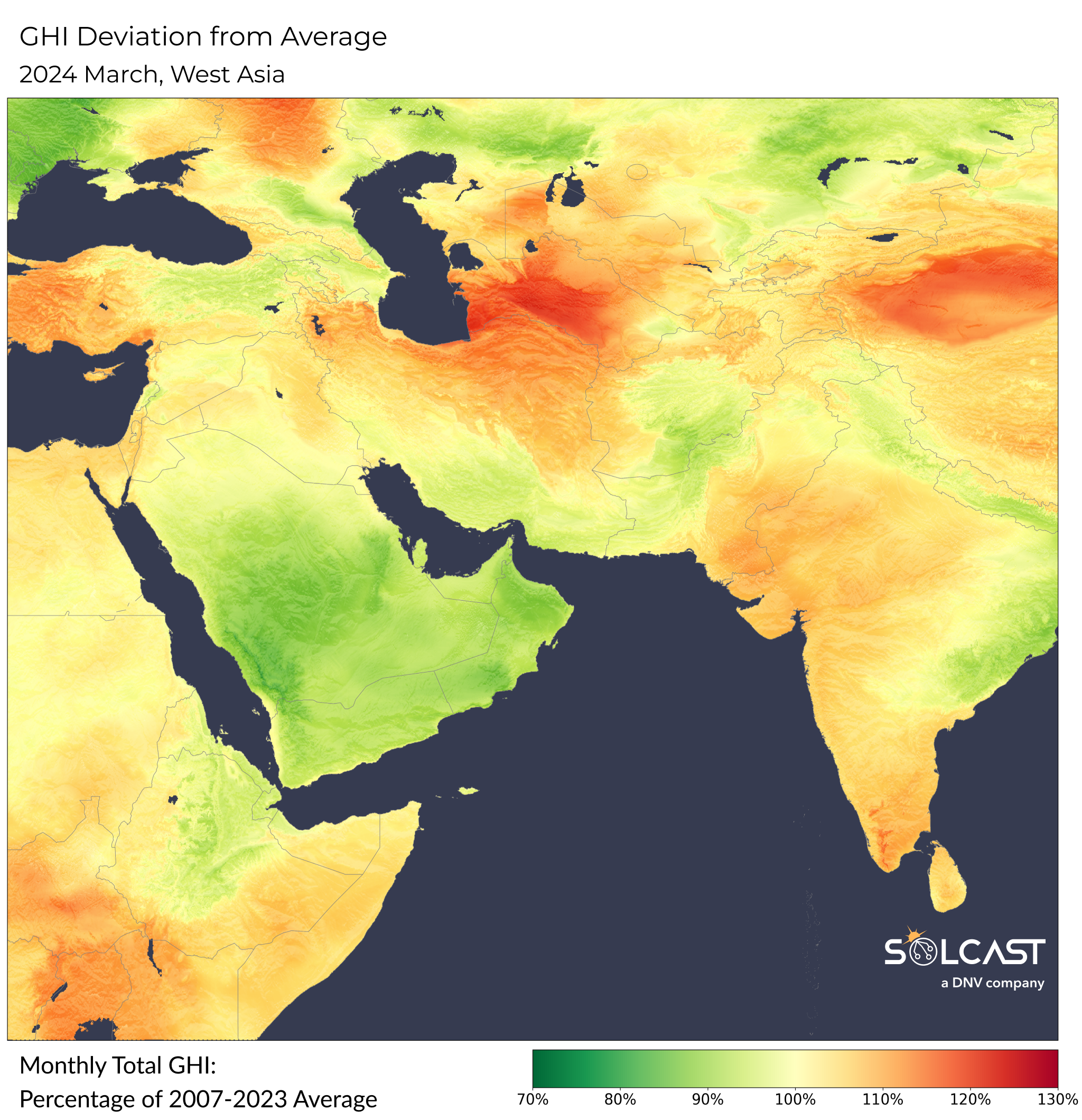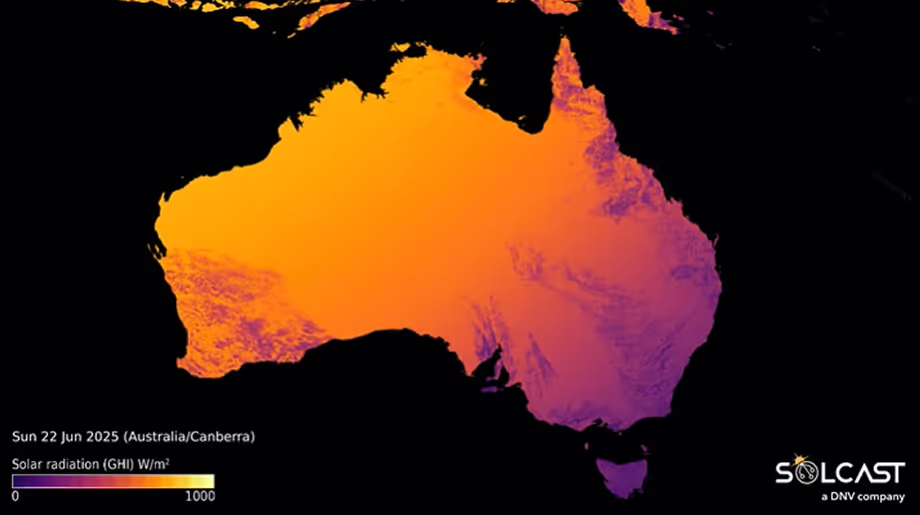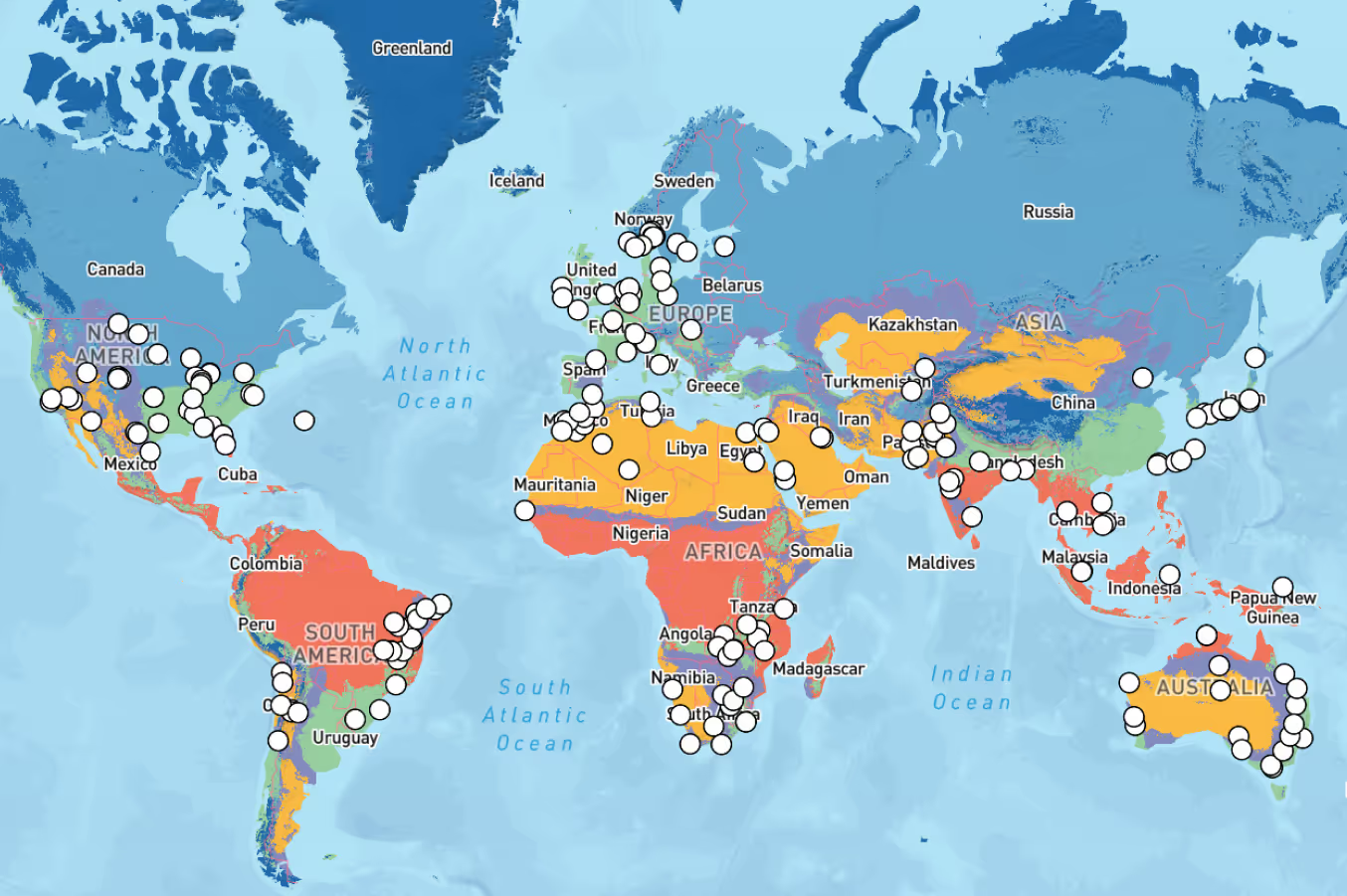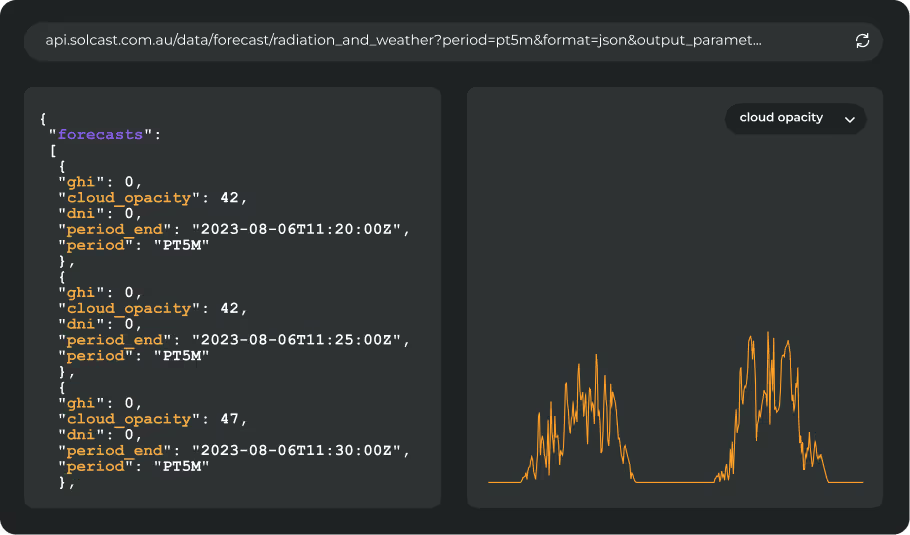March saw varied solar conditions across West Asia, with the Arabian Peninsula experiencing humid winds and dust storms that reduced solar irradiance to 90% of typical levels for the month. Meanwhile, Sri Lanka and parts of India enjoyed increased irradiance, up to 115% above normal, due to reduced cloud cover, contrasting with the eastern regions impacted by heavy rainfall. In the absence of a dominating weather system across the region, the rest of west asia saw localised variations from 90-110% normal irradiance, though Turkmenistan saw up to 130%.

Solar projects in the Arabian Peninsula faced challenges as low pressure drove southeasterly winds which brought increased humidity, clouds, and occasional rain. The associated atmospheric instability delivered strong winds, increasing potential for sand and dust storms, as was seen at the end of month. These impacts contributed to a 10-15% drop in solar irradiance across countries like Saudi Arabia, Bahrain, Qatar, the UAE, Oman, and Yemen. Notably, Yemen still reported the highest irradiance in the region, though it was a full kWh/m2/day below the usual.
In contrast, western and southern India saw a 5-15% increase in normal irradiance levels, reaching as high as 7 kWh/m2/day. However, heavy rainfall over the Himalayas, Nepal, and East India led to localized flooding and decreased solar irradiance.

On March 24th, the UAE National Centre of Meteorology issued a dust warning due to strong winds stirring up dust across the Peninsula. Dust in the atmosphere diffuses radiation, significantly decreasing irradiance even when there are no clouds. This also leads to significant soiling of solar panels as dust settles. As seen in the below analysis of peak aerosol levels in the 24 hours following the warning, the atmospheric impact of this dust cloud was particularly pronounced in the UAE and Yemen, demonstrating how atmospheric conditions can abruptly alter solar energy generation.
.png)
How Solcast models aerosols for irradiance and PV power data
While dust events are not frequent, they typically occur over short durations with significant impacts. Unlike climatological historic data or general weather forecasts, aerosol events (like dust, pollution, smoke, ash, etc.) are well-handled in all Solcast historical, real-time, and forecast irradiance and PV power data using high-quality input data from Copernicus ECMWF and NASA - National Aeronautics and Space Administration, downscaled to 90-metre resolution using Solcast algorithms. Learn more about Solcast's aerosol handling here. Start evaluating our data via the Solcast API toolkit, or reach out to our team to learn more.










.avif)


